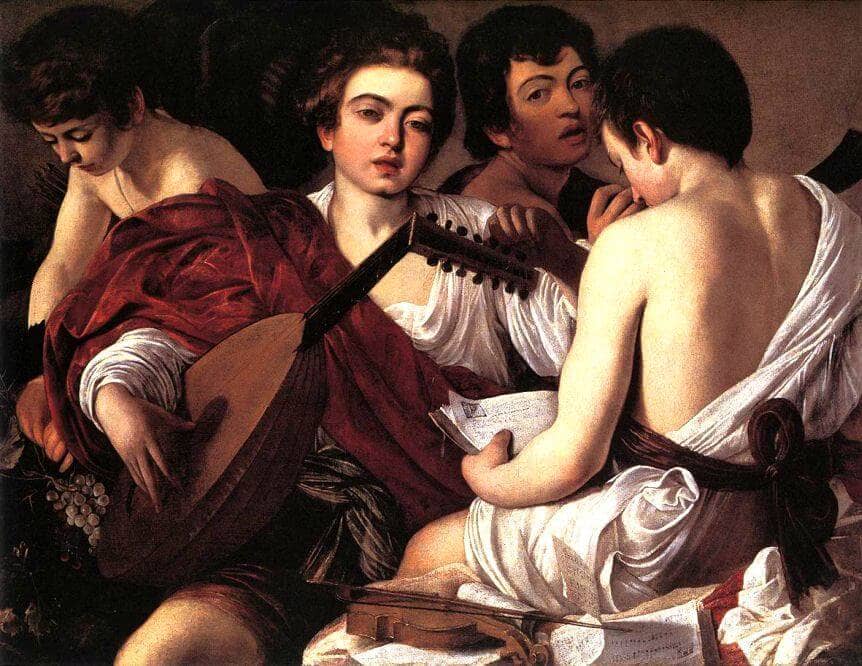Concert of Youths by Caravaggio

The inscription is not original, and the picture has obviously been cut down, at least on the left-hand side. But it is, none the less, probably the picture mentioned by Baglione as having been
painted for Cardinal Francesco del Monte, one of Caravaggio's first and most enthusiastic patrons. Its style and mood reflect the artist's earliest methods and preoccupations: half-length figures of
androgynous youths, clad in pseudo-classical garb, are posed in a manner which is sexually suggestive yet also hints strongly at an allegorical meaning. As usual this meaning remains elusive,
although it probably has something to do with music either as an antidote for love or an accompaniment to it. The figure in the centre has tears in his eyes, and the one on the left, plucking a
bunch of grapes, originally had wings, like a cupid.
The fact that, according to the restorer, Isepp, these wings were subsequently painted out by the artist himself is, if correct, comparable to
Caravaggio's supposed over-painting of the wound on St. Francis's hand in the Hartford picture. Such an action suggests a calculated tendency towards understatement and possibly also a desire to do
away with some of the artifice of allegorical language in order to universalize the picture's impact. The realistic qualities of the Concert of Youths contribute to this process, and in fact
it even seems possible that Caravaggio constructed the picture out of portraits of himself, as the horn player looking over his shoulder, and his friends, the lutenist possibly being based on his
close friend the Syracusan painter Mario Minniti. But it is also noteworthy that the rather abstract arrangement of limbs and masses and the stylized treatment of such features as the ' jtenist's
right hand reveal an interest in pattern and structure which equally takes us away from the finicky detailing of attributes so favoured by a certain kind of allegorical painter.
















